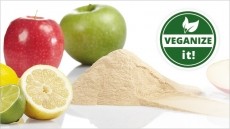Use of nisin in liquid eggs 'not a safety concern'
of liquid eggs does not pose a safety concern, says EFSA.
The European Food Safety Authority (EFSA) has also advised that the production of nisin through a modified production process is also safe.
The additive (E 234), which is currently authorised for food preservation in the European Union by directive 95/2/EC on food additives other than colours and sweeteners, and is also permitted in ripened cheese and processed cheese, is defined as a group of closely related polypeptides composed of 34 amino acids.
It is produced by certain strains of the bacterium Lactococcus lactis (formerly Streptococcus lactis; Schliefer et al. 1985).
The authority's scientific panel on food additives, flavourings, processing aids and materials in contact with foods (AFC Panel) was recently asked to expand the permitted uses of nisin to preserve liquid eggs at a level not exceeding 6.25 mg/L.
A manufacturer also notified EFSA (European Food Safety Authority) that it wished to use a modified manufacturing and extraction process for nisin. The modified process is based on fermentation of a sugar medium as a replacement for the milk medium.
As this modified process differs from the original process, the AFC considered it appropriate to consider whether nisin produced in this manner was acceptable for use.
The petitioner believes that nisin can improve the safety of liquid eggs. According to the present EU legislation requirements, the liquid whole egg is pasteurised at temperatures of not lower than 64.4 0C for at least 2.5 minutes.
The heat process guarantees an approximate 99 per cent killing of the bacteria present in the raw liquid whole egg. Surviving bacteria may include both Gram-negative and Gram-positive species and are capable of growth even at refrigeration temperatures.
The variable shelf life of pasteurised liquid egg products (10-11 days), which depends on the initial load, the pasteurization, and the storage conditions can be increased by the use of nisin. Bacillus cereus, which also is a common contaminant of liquid whole egg is not controlled by other preservatives such as sorbate and benzoate.
"The petitioner has provided data that demonstrate the efficacy of nisin in preserving liquid eggs," said EFSA in a statement.
A dossier from Danisco containing data supporting the use of nisin for the preservation ofliquid egg products and a description of the modified production process was also provided.
The panel concluded that the previously established ADI (acceptable daily amount) of 0.13 mg nisin/kg bw is also valid for the nisin produced by the modified process. The panel also concluded that the modified manufacturing and extraction process based upon fermentation of a sugar medium as a replacement for the milk medium would avoid a risk to individuals allergic to milk products, and that the additional use of nisin in liquid eggs is not of safety concern.
Nisin is permitted in over 40 countries worldwide including USA, Australia, SouthAfrica, Russia and India for use as an antimicrobial agent in a variety of food products.





















